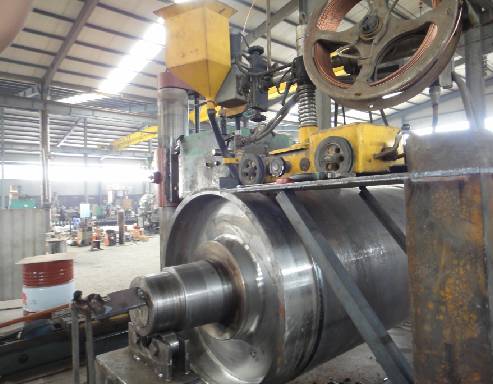 Afrikaans
Afrikaans  Albanian
Albanian  Amharic
Amharic  Arabic
Arabic  Armenian
Armenian  Azerbaijani
Azerbaijani  Basque
Basque  Belarusian
Belarusian  Bengali
Bengali  Bosnian
Bosnian  Bulgarian
Bulgarian  Catalan
Catalan  Cebuano
Cebuano  Corsican
Corsican  Croatian
Croatian  Czech
Czech  Danish
Danish  Dutch
Dutch  English
English  Esperanto
Esperanto  Estonian
Estonian  Finnish
Finnish  French
French  Frisian
Frisian  Galician
Galician  Georgian
Georgian  German
German  Greek
Greek  Gujarati
Gujarati  Haitian Creole
Haitian Creole  hausa
hausa  hawaiian
hawaiian  Hebrew
Hebrew  Hindi
Hindi  Miao
Miao  Hungarian
Hungarian  Icelandic
Icelandic  igbo
igbo  Indonesian
Indonesian  irish
irish  Italian
Italian  Japanese
Japanese  Javanese
Javanese  Kannada
Kannada  kazakh
kazakh  Khmer
Khmer  Rwandese
Rwandese  Korean
Korean  Kurdish
Kurdish  Kyrgyz
Kyrgyz  Lao
Lao  Latin
Latin  Latvian
Latvian  Lithuanian
Lithuanian  Luxembourgish
Luxembourgish  Macedonian
Macedonian  Malgashi
Malgashi  Malay
Malay  Malayalam
Malayalam  Maltese
Maltese  Maori
Maori  Marathi
Marathi  Mongolian
Mongolian  Myanmar
Myanmar  Nepali
Nepali  Norwegian
Norwegian  Norwegian
Norwegian  Occitan
Occitan  Pashto
Pashto  Persian
Persian  Polish
Polish  Portuguese
Portuguese  Punjabi
Punjabi  Romanian
Romanian  Russian
Russian  Samoan
Samoan  Scottish Gaelic
Scottish Gaelic  Serbian
Serbian  Sesotho
Sesotho  Shona
Shona  Sindhi
Sindhi  Sinhala
Sinhala  Slovak
Slovak  Slovenian
Slovenian  Somali
Somali  Spanish
Spanish  Sundanese
Sundanese  Swahili
Swahili  Swedish
Swedish  Tagalog
Tagalog  Tajik
Tajik  Tamil
Tamil  Tatar
Tatar  Telugu
Telugu  Thai
Thai  Turkish
Turkish  Turkmen
Turkmen  Ukrainian
Ukrainian  Urdu
Urdu  Uighur
Uighur  Uzbek
Uzbek  Vietnamese
Vietnamese  Welsh
Welsh  Bantu
Bantu  Yiddish
Yiddish  Yoruba
Yoruba  Zulu
Zulu mining conveyor parts
The Essential Components of Mining Conveyor Systems
In the mining industry, efficiency and productivity are paramount. One key element that contributes significantly to these objectives is the conveyor system. Mining conveyor parts play a crucial role in the seamless transportation of materials, enhancing the overall effectiveness of mining operations. This article will explore the essential components of mining conveyor systems, their functions, and the importance of maintaining these parts for optimal performance.
1. Conveyor Belts
At the heart of any conveyor system is the conveyor belt. Typically made from durable materials like rubber or steel, conveyor belts are designed to withstand the harsh conditions of mining environments. They transport various materials, from loose rocks to finely crushed ore, across different terrains. The choice of belt is critical and depends on factors such as the type of material being transported, the distance, and the speed required. Ensuring that the conveyor belt is in good condition is vital as any damage can lead to downtime and increased operational costs.
2. Pulleys
Pulleys are integral components that help in the movement of the conveyor belt. They are located at key points on the conveyor system, including the head, tail, and intermediate positions. Head pulleys drive the belt, while tail pulleys help in returning it. Properly designed pulleys reduce the risk of wear on the belt, improve efficiency, and are essential for maintaining tension within the system. Regular inspections of pulleys for wear and tear can prevent unexpected failures.
3. Idlers
Idlers support the conveyor belt and help maintain its tension during operation. They are positioned along the length of the conveyor and serve to minimize the sag between pulleys. Idlers come in various designs, including troughing and return idlers, each serving a specific function. Ensuring that idlers are properly lubricated and aligned is essential for minimizing friction and wear on the conveyor belt.
mining conveyor parts

4. Drive Systems
The drive system is responsible for powering the conveyor belt. It typically includes electric motors, gearboxes, and couplings. The selection and maintenance of the drive system are critical for ensuring that the conveyor operates smoothly and efficiently. Inadequate power or misalignment in the drive system can lead to increased energy consumption and reduced productivity. Regular maintenance checks on these components are essential to prolong their lifespan and efficiency.
5. Take-Up Systems
Take-up systems are used to maintain the tension of the conveyor belt, allowing for proper functioning and preventing slippage. They can be either manual or automatic, with automatic systems providing more consistent tension control. Properly functioning take-up systems are vital for the longevity of the conveyor and reducing the risk of failures due to belt slippage.
6. Safety Devices
In the mining environment, safety is a top priority. Conveyor systems are equipped with various safety devices, including emergency stops, guards, and overflow protection systems. These devices are designed to protect workers and equipment from accidents and malfunctions. Regular checks and maintenance of these safety devices are essential to ensure compliance with safety standards and to protect personnel working near conveyor systems.
Conclusion
Mining conveyor parts are the backbone of material handling in the mining industry. Each component, from conveyor belts and pulleys to drive systems and safety devices, plays a pivotal role in ensuring the smooth operation of the entire system. Regular maintenance and timely inspections of these components are vital for maximizing efficiency, reducing downtime, and ensuring a safe working environment. By investing in the upkeep of mining conveyor parts, companies can enhance productivity and maintain a competitive edge in the industry.
-
Revolutionizing Conveyor Reliability with Advanced Rubber Lagging PulleysNewsJul.22,2025
-
Powering Precision and Durability with Expert Manufacturers of Conveyor ComponentsNewsJul.22,2025
-
Optimizing Conveyor Systems with Advanced Conveyor AccessoriesNewsJul.22,2025
-
Maximize Conveyor Efficiency with Quality Conveyor Idler PulleysNewsJul.22,2025
-
Future-Proof Your Conveyor System with High-Performance Polyurethane RollerNewsJul.22,2025
-
Driving Efficiency Forward with Quality Idlers and RollersNewsJul.22,2025





























